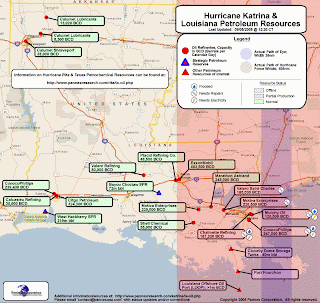This is from Seeking Alpha, and was copied to my site in its entirety because i think it is very good reading.
---------------------------
Warren Buffet foresaw the current financial disaster more than five years ago. I pulled out his 2002 Chairman’s Letter, wherein he addresses derivatives and their potential to scuttle the entire financial system. Here are some key passages:
“Charlie and I are of one mind in how we feel about derivatives and the trading activities that go with them: We view them as time bombs, both for the parties that deal in them and the economic system.”
“In recent years, some huge-scale frauds and near-frauds have been facilitated by derivatives trades. In the energy and electric utility sectors, for example, companies used derivatives and trading activities to report great “earnings” – until the roof fell in when they actually tried to convert the derivatives-related receivables on their balance sheets into cash. “Mark-to-market” then turned out to be truly “mark-to-myth.””
“Another problem about derivatives is that they can exacerbate trouble that a corporation has run into for completely unrelated reasons. This pile-on effect occurs because many derivatives contracts require that a company suffering a credit downgrade immediately supply collateral to counterparties. Imagine, then, that a company is downgraded because of general adversity and that its derivatives instantly kick in with their requirement, imposing an unexpected and enormous demand for cash collateral on the company. The need to meet this demand can then throw the company into a liquidity crisis that may, in some cases, trigger still more downgrades. It all becomes a spiral that can lead to a corporate meltdown.”
“Charlie and I believe, however, that the macro picture is dangerous and getting more so. Large amounts of risk, particularly credit risk, have become concentrated in the hands of relatively few derivatives dealers, who in addition trade extensively with one other. The troubles of one could quickly infect the others. On top of that, these dealers are owed huge amounts by non-dealer counterparties. Some of these counterparties, as I’ve mentioned, are linked in ways that could cause them to contemporaneously run into a problem because of a single event (such as the implosion of the telecom industry or the precipitous decline in the value of merchant power projects). Linkage, when it suddenly surfaces, can trigger serious systemic problems.”
“In our view, however, derivatives are financial weapons of mass destruction, carrying dangers that, while now latent, are potentially lethal.”
There’s much more, available on the Berkshire website. Warren and Charlie have made some additional comments at the 2007 annual meeting (courtesy of Whitney Tilson). Munger:
“As sure as God made little green apples this will lead to big trouble in due time. This will lead to a result we have been expecting for some time.”
On the math models used by Wall Street:
“They’re all crazy.” “Very smart people do very dumb things” and that just because people “have high IQs” does not prevent them from creating financial models that are “at least 50% twaddle.”
On Berkshire’s underwriting standards:
“We only write fire insurance on concrete bridges that are covered by water.”
Buffett:
“Not too many years ahead you will get disruption. Predicting when is something we can’t do…(It will reward) those with cash and guts.”
Munger:
“Will Rogers said, ‘Learn not to pee on an electrified fence without actually doing it.”
Alas, heeding that last one would’ve saved Wall Street many times.
The financial system is built upon leverage. Its very existence depends on lack of correlation - the requirement that bad things don’t all happen at once: that depositors don’t make a run on the bank, insurance liabilities aren’t all claimed at once, derivative contracts don’t all go the same way at the same time, mortgages don’t all default at once. However, as Buffett says and I also heard Bill Ackman paraphrase, when the stuff hits the fan, everything correlates. That’s where we are now.
If you took on too much risk, levered up too much, didn’t prepare for the day when everything correlates… well then adios. See ya. Buh-bye.
Buffett and Munger were not so much prescient as good students of market history and innately conservative. They’d seen it all before in one form or another. I return to Galbraith from his book “A Short History of Financial Euphoria”:
“The rule is that financial operations do not lend themselves to innovation. What is recurrently so described and celebrated is, without exception, a small variation on an established design, one that owes it distinctive character to the aforementioned brevity of the financial memory. The world of finance hails the invention of the wheel over and over again, often in a slightly more unstable version. All financial innovation involves, in one form or another, the creation of debt secured in greater or lesser adequacy by real assets.”
Obviously Bear, Lehman, Freddie, Fannie, AIG, WaMu, Countrywide, on and on, went with the “lesser adequacy” model.







